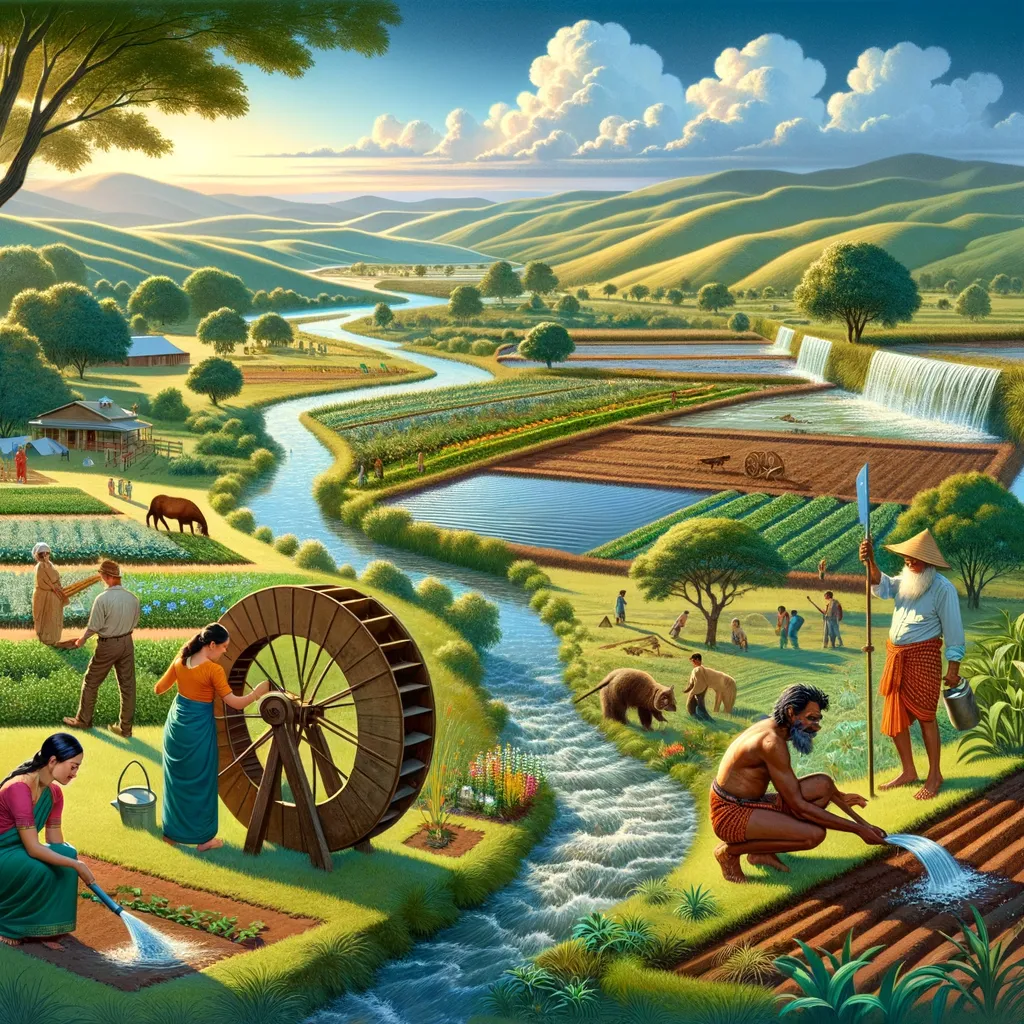Reviving Ancestral Wisdom: Traditional Methods of Water Conservation That Work Today
Welcome to our enlightening guide where we dive into the ancient wisdom of Traditional Methods of Water Conservation that are still effective in today’s modern world. With the increasing scarcity of water, it becomes crucial to look back and learn from the practices that our ancestors used to ensure a sustainable and efficient management of this precious resource.
Whether you’re a concerned parent looking to educate your family about the importance of water conservation, or you’re simply interested in integrating sustainable practices into your daily life, this guide is designed to equip you with time-tested methods that can make a significant difference. From ancient rainwater harvesting techniques to the art of aquifer recharge, we delve into a collection of traditional wisdom that is both fascinating and immensely useful in our current environmental context.
And remember, integrating these practices into your life doesn’t just contribute to water conservation; it also reconnects you and your family with nature in meaningful ways. Embrace the opportunity to explore the great Outdoors and engage in Outdoor Activities that bring awareness and appreciation for the natural world around us.
Why Traditional Water Conservation Methods?
Before diving into the specifics, it’s essential to understand why traditional methods of water conservation still hold value today. These practices were developed in times when water was not as readily accessible as it is now, forcing communities to come up with ingenious solutions to manage and conserve water. These methods are not only a testament to human ingenuity but also to our ability to live in harmony with the environment.
Traditional water conservation techniques are typically low-tech and rely on natural landscape features, making them sustainable and eco-friendly options. In an age where technology dominates our approach to solving environmental issues, these age-old methods remind us that sometimes, the simplest solutions are the most effective.
Understanding The Basics: Rainwater Harvesting
Rainwater harvesting is perhaps one of the oldest and most widely implemented methods of water conservation across different cultures and regions. This technique involves collecting and storing rainwater from rooftops, land surfaces, or rock catchments. The collected water can then be used for irrigation, livestock, and even for household consumption after proper treatment.
The practice of rainwater harvesting does not only alleviate the demand on conventional water supply systems but also plays a crucial role in preventing soil erosion and flood management. By implementing simple rainwater harvesting systems, families can reduce their water bills, ensure a backup water supply during droughts, and contribute to the overall water sustainability in their community.
html
Reviving Ancestral Wisdom: Traditional Methods of Water Conservation That Work Today
Welcome to our enlightening guide where we dive into the ancient wisdom of Traditional Methods of Water Conservation that are still effective in today’s modern world. With the increasing scarcity of water, it becomes crucial to look back and learn from the practices that our ancestors used to ensure a sustainable and efficient management of this precious resource.
Whether you’re a concerned parent looking to educate your family about the importance of water conservation, or you’re simply interested in integrating sustainable practices into your daily life, this guide is designed to equip you with time-tested methods that can make a significant difference. From ancient rainwater harvesting techniques to the art of aquifer recharge, we delve into a collection of traditional wisdom that is both fascinating and immensely useful in our current environmental context.
And remember, integrating these practices into your life doesn’t just contribute to water conservation; it also reconnects you and your family with nature in meaningful ways. Embrace the opportunity to explore the great Outdoors and engage in Outdoor Activities that bring awareness and appreciation for the natural; Here are five things every parent should know about preparing for this journey:
1. Understanding Water Conservation Necessities
First and foremost, grasping the essential need for water conservation is critical. Explaining the value of water and the reasons behind conserving it helps children and adults alike appreciate the efforts towards sustainability. Discuss the effects of drought, water scarcity, and how traditional methods can alleviate these problems. By establishing a solid understanding, motivating your family to engage in conservation practices becomes much easier.
2. Exploring Local Water Conservation Practices
Depending on your geographical location, certain traditional water conservation methods may be more prevalent or suitable than others. Researching and exploring local historical practices can provide a wealth of knowledge and a deeper connection to your community. It also offers a practical perspective on what methods are feasible for implementation in your home or community. This helps in not only preserving water but in keeping local traditions alive.
3. Preparation for Rainwater Harvesting
Rainwater harvesting is a universally applicable method that requires minimal setup but offers significant benefits. Parents should know how to prepare their homes for rainwater collection, including gutter maintenance, identifying appropriate storage solutions, and ensuring safe and efficient use of harvested water. Educational resources and local workshops can offer practical advice and hands-on experience for getting started.
4. Engaging Children in Water Conservation
Integrating water conservation practices into your family’s routine can be an educational and empowering experience for children. Creating games, challenges, or projects centered around conservation can make learning fun and impactful. Simple activities, such as measuring daily water usage, building a small rain garden, or even designing a basic rainwater harvesting model, can instill a lifelong appreciation for sustainability.
5. Leading by Example
Perhaps the most critical aspect of preparing for traditional water conservation methods is leading by example. Your actions and dedication to conserving water will inspire your children and those around you. Showcasing the benefits and positive impacts of these practices, such as healthier gardens, reduced water bills, and a more sustainable lifestyle, reinforces the importance of these efforts and motivates others to follow suit.
In conclusion, understanding and preparing for traditional methods of water conservation not only helps in preserving this vital resource but also connects families with a legacy of environmental stewardship. By educating ourselves and our children, adopting appropriate conservation techniques, and leading by example, we can make a significant difference in our communities and the world. Embrace the wisdom of the past to secure a more sustainable future for generations to come.
Disclaimer
The articles available via our website provide general information only and we strongly urge readers to exercise caution and conduct their own thorough research and fact-checking. The information presented should not be taken as absolute truth, and, to the maximum extent permitted by law, we will not be held liable for any inaccuracies or errors in the content. It is essential for individuals to independently verify and validate the information before making any decisions or taking any actions based on the articles.




